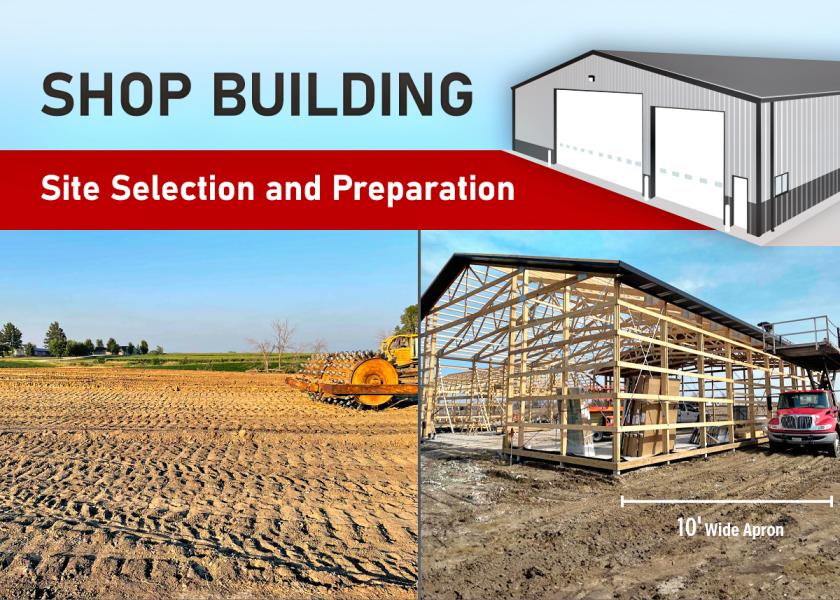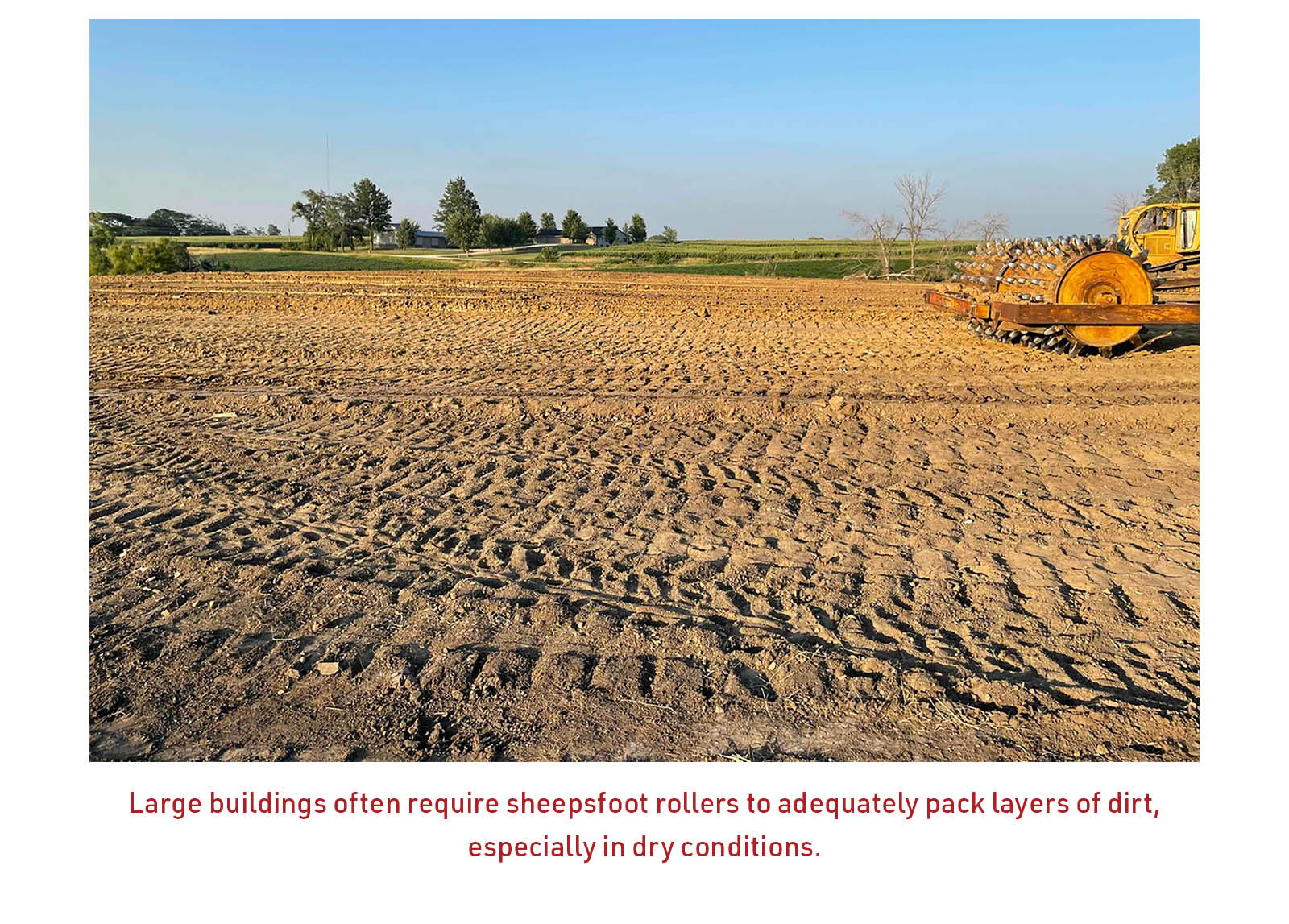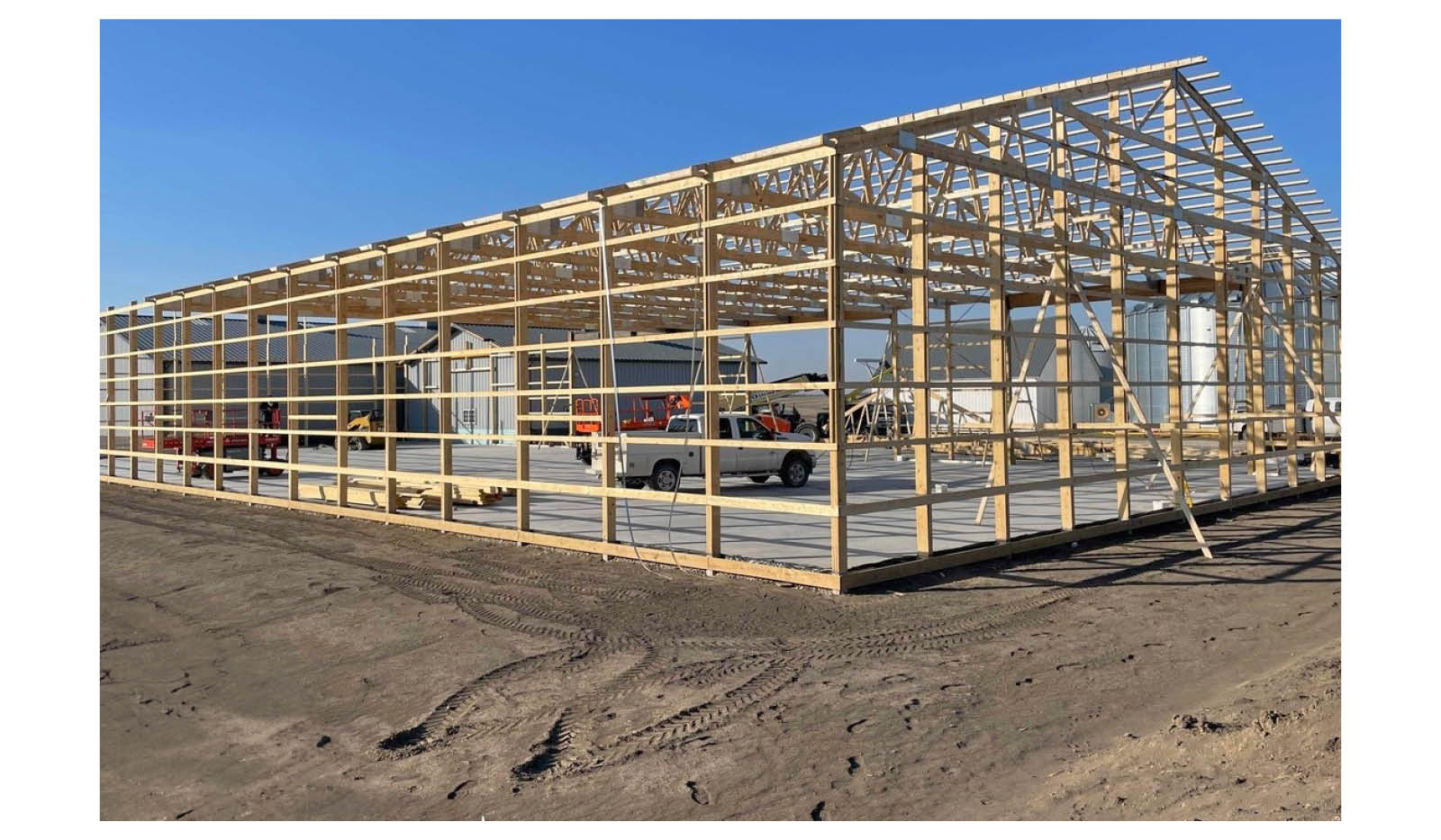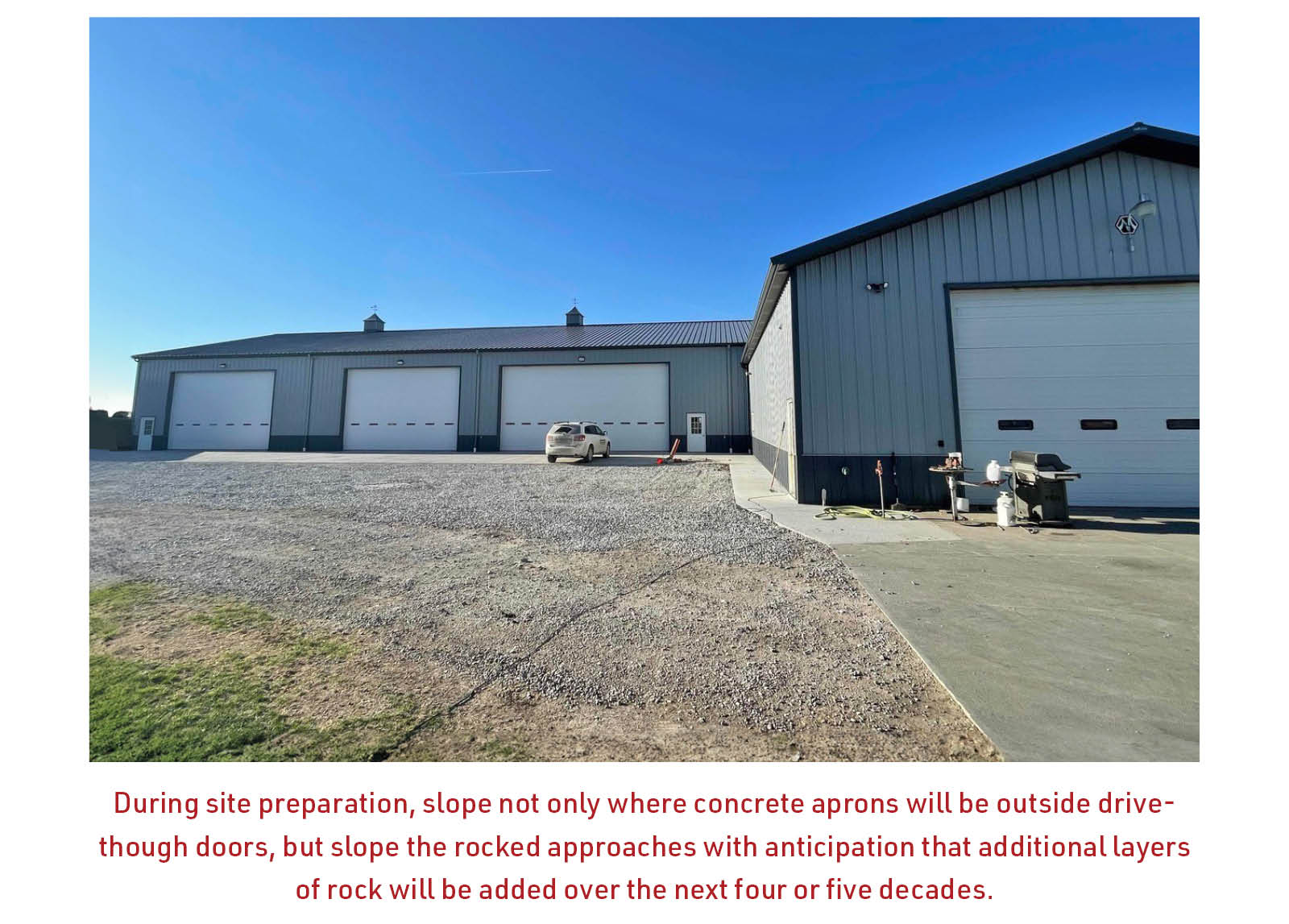Start Here When Building A Farm Shop

The first steps when building a farm shop are site selection and site preparation. Here are the necessary considerations, a few of which are sometimes overlooked.
Experience matters.
“With big buildings, it’s important to hire an experienced earthmoving contractor who knows the soils in an area, or even a geo-technical engineering firm to do soil borings and create a site preparation report,” says Dave Flewelling, owner of Flewelling Earthmoving, Moville, Iowa. “Different soils require different processes, sheepsfoot rollers or vibratory rollers, to get things compacted and stabilized right.”
Start with a blank slate.
Many contractors who specialize in erecting farm buildings recommend starting fresh with a new site, accessed by a new driveway direct from the road. “Grandpa wanted his corn crib close to his hog house,” says Wayne Stubbenbeck, owner of Mi-Way Enterprises, a Wick Buildings distributor in Elmwood, Neb. “Today, we need to allow enough room to turn around a semi beside a combine with a 30' platform.”

Choose a site that’s as level as possible.
“No spot is totally flat,” Stubbenbeck says. “You’re probably going to have to either haul in dirt, or cut-and-fill to create a level spot. Cutting and filling on-site is generally cheaper than hauling dirt from somewhere else.”
Know what’s under the potential site.
“If the building will be on virgin soil like crop land, treated wood posts or laminated columns are probably the economical way to go,” Stubbenbeck says. “But if there was a feedlot in that area, the soil may be so acidic I’d recommend either a short concrete stem wall with the posts or columns mounted on top of that wall, or concrete Perma-Columns in the ground with the laminated wooden columns on top of them. Old cisterns, abandoned wells, buried building foundations, any inconsistency in the soil under a building can cause problems down the road.”
In Stubbenbeck’s area, the soil has enough clay to be compacted to a good base. But 30 miles east of him, it’s a good idea to have the soil cored to know what’s under the site. Some of the buildings can be over clay at one end and sand at the other end, he says.
Big buildings might need significant ground shaping to redirect runoff.
This is especially true if the building nudges into a hillside. “Even if the initial pad is a foot or so elevated,” Flewelling says. “It’s often necessary to construct a diversion cut or terrace to keep heavy rains away from the building.”

Earthmoving must be accurate.
If one corner of a 100' long building’s earthen pad is even a couple of inches off-grade, it could potentially influence every subsequent step of the remaining building process. “We try to keep a finished pad within plus or minus 1/10 of a foot (1.2") of the proposed grade,” Flewelling explains. “We use GPS-controlled grading equipment to keeps things within the defined tolerances.”
Compacting is critical.
“Depending on the type of soil, some soils need to be spread and compacted every 6",” says Nick Horstman, Morton Buildings sales representative in central Iowa. “Others can be compacted one foot at a time. Pushing dirt around with a tractor and three-point blade and then driving a four-wheel-drive tractor back and forth over it doesn’t mean it’s fully and evenly compacted all the way to the base.”
Create and compact more than the basic building pad.
“The pad needs to be oversized 10' to 12' beyond the finished roof edge so we have room to run our machines and lift materials up onto the roof during construction,” Horstman says. “That work area needs to be level during construction, especially with tall sidewalls. Plan on final-shaping and sloping that apron for drainage after the building has been completed.”

Include aprons and driveway in the initial site plan and prep.
“A lot of people wish they had poured a bigger concrete apron in front of their main doors,” Flewelling says. “Not only do you need to shape and compact that area just like the dirt under the building, but you have to make sure there will be enough slope on the finished apron so that water doesn’t run into the shop.”
Consider the future.
“If your plan is to have a rocked parking area or turn-around for semis and equipment near the building, remember that over the next 20 years you’ll probably add more rock to those areas several times,” Flewelling says. “You need to start with the shop’s pad and apron high enough to allow for the addition of rock to the driveways and parking area over the years.”








